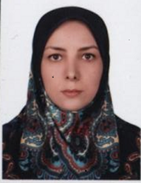
Seyedeh Esmat Hosseini
Royan Institute for stem Cell Biology and Technology, Iran
Title: The efficacy of platelet gel derived umbilical cord blood on diabetic foot ulcers: a double -blind randomized clinical trial
Biography
Biography: Seyedeh Esmat Hosseini
Abstract
Type 2 diabetes is one of the most prevalent diseases throughout the world. The foot ulcers are severe complications of this disease. Foot ulcers induce the high rate of morbidity, impair quality of life and bring about extreme costs to health service providers and give rise to waste of time. Recently, platelet-rich plasma (PRP) and platelet gel (PG) have been used for the treatment of chronic wounds. In the present randomized, double -blind, placebo-controlled study, platelet gel derived from umbilical cord blood (UCB) was used to heal the diabetic foot. The patients were randomly divided into three groups, under the categories of Platelet gel (PG), platelet-poor plasma (PPP) and lubricant gel (placebo) (ratio 1:1:1). The processes of gels application were launched for the subject of each group twice per week with 3-4 day interval. This mechanism protracted for eight weeks. After completion of 8 weeks, the patients were followed up after two weeks and then continued for three months with one -month interval. 30 patients underwent statistical analysis. Except for diastolic blood pressure which was significant between groups, there were no statistically significant differences in patients’ baseline demographics. No significant differences were detected between groups at baseline of wounds (P = 0.09). The results revealed that there is no statistically significant interaction among three groups during follow- up time. The present study provides evidence that there are no significant differences in the size of wound among PG, PPP, and placebo group.

